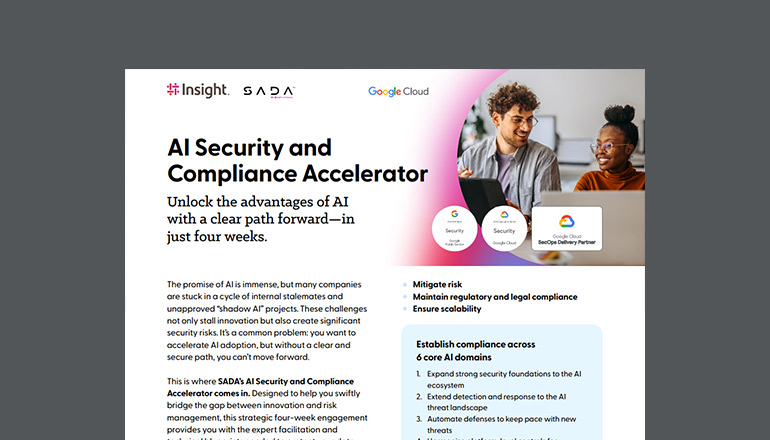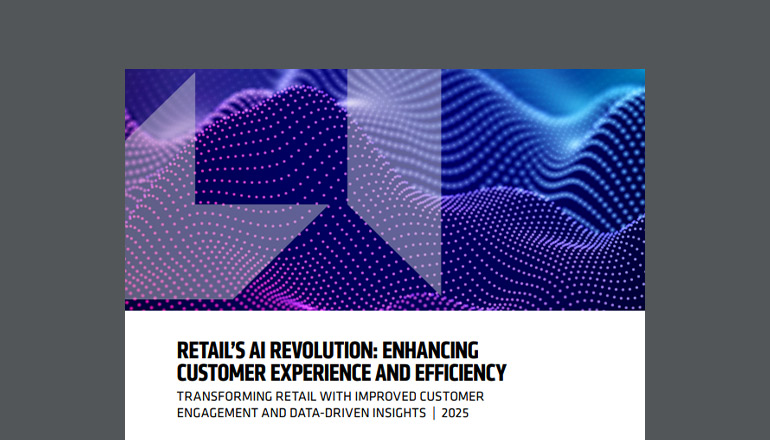Client story National Restaurant Chain Commits to Data Modernization
When a divesture-driven migration left a nationally recognized chain restaurant with fractured data and inconsistent reporting, Insight built a modern data pipeline to establish a single source of truth for greater accuracy and reduced operational costs.
By Insight Editor / 2 Nov 2021 / Topics: Artificial Intelligence (AI) Microsoft Azure Analytics

Facts at a glance
Client industry:
Restaurant
Size of company:
$384 million in revenue with more than 445 locations across 18 states
Challenge:
After a divestiture forced a rapid data migration, the client was left with a siloed data environment, highly manual processes that resulted in inaccurate reporting and a costly approach to long-term storage.
Solution:
Insight constructed a new data ingestion pipeline, leveraging a modern data lake, data warehouse and Azure® Databricks®, to integrate disconnected systems and create a single source of truth for reporting.
Results:
- Centralized data ingestion for more accurate reporting
- Streamlined, cost-effective solution for historical reporting
- Ongoing optimizations enabled through a new auditing log
- Reduced operational costs by $13,000/month
Solution area:
Digital Innovation
When a 70+ year-old restaurant chain split into two separate brand entities, it was left with a range of fractured toolsets and expiring licenses. Leaders determined it was time to make the shift from their legacy systems to a cloud-based solution through Azure and Power BI®.
The migration would impact data and reporting across the organization — from Point-of-Sale (POS) systems to HR, Enterprise Resource Planning (ERP), Customer Relationship Management (CRM) and financial reporting systems.
Two outside consulting companies supported the initial migration, but a series of tight deadlines drove short-term-oriented solutions. The results served immediate reporting needs, but ultimately resulted in a siloed data environment.
Opportunities for optimization arise.
Toward the end of the project, Insight was brought on to provide staff augmentation services, helping address gaps in the internal IT team during the ongoing reporting migration efforts.
Our architects and developers became trusted resources for business intelligence reports and formed strong relationships with business users in finance, accounting, marketing and operations departments. Through their work, these Insight teammates recognized opportunities to optimize the restaurant chain’s data and analytics environment by implementing additional toolsets and leveraging cloud best practices.
They recommended a second phase of the migration initiative to fully modernize the data pipeline.
Leaders within the organization agreed to their ongoing challenges with reporting accuracy and performance warranted additional action. And, as a result of the existing relationship, local partnership and familiarity with the client’s data environment, Insight was selected as the preferred partner in navigating the journey to data modernization.
Insight teammates recognized opportunities to optimize the restaurant chain’s data environment by implementing additional toolsets and leveraging cloud best practices.
Modernizing architecture to tackle challenges
As the Insight team worked with the restaurant chain to identify areas of improvement, three primary challenges became clear. First and foremost, the rapid migration had left the organization with several disparate sources of data, which led to major gaps in reporting. Secondly, manual collection and aggregation processes were prone to human error and made it nearly impossible for employees to generate accurate reports.
Furthermore, to curb the high costs of database storage, the IT team relied on frequent data erasure — wiping their history daily, then reloading the past 60 days of data. This process resulted in inaccurate historical data that made it difficult to gain long-term insights for improved decision-making.
To address these challenges, the decision was made to consolidate data and optimize reporting using a data lake and modern data warehouse model.
From July 2019 to December 2019, an Insight team of two data engineers and one data architect began transforming the organization’s data architecture and consolidating the various sources into a singular ingestion pipeline. They worked closely with the restaurant chain’s CIO, applications services director and BI manager to understand the objectives for data, reporting and security, and share updates as the project progressed.
The client had an existing data lake, but usage was limited to one or two specific processes, and it lacked the containerization needed to support broader reporting. Insight helped redefine the layers of the data lake to meet the new requirements. This new architecture provided a more cost-effective solution for data storage and cleansing.
An enterprise data warehouse was then established in Azure as the central repository for current and historical data, enabling users to generate reports more easily and accurately. Azure Databricks was selected as the preferred Extraction, Transformation and Loading (ETL) tool used to pull data from disparate sources into the consolidated ingestion layer. Performance testing against a pure Azure Data Factory (ADF) ETL solution revealed Databricks had the performance benefits required to meet the client’s Service Level Agreements (SLAs).
Throughout the project, Insight collaborated with our partners at Microsoft to ensure the recommended architecture and toolsets aligned with Microsoft best practices.
Insight teammates also built out an auditing log to capture record counts and load times at each step of the ingestions process. This was an entirely new capability that would enable the client’s IT team to identify discrepancies and pinpoint issues from day to day.
By replacing the outdated approach to database storage with a more flexible, scalable data architecture, the client has reduced operational costs by more than $13,000 per month.
Over the course of six months, Insight completed the development of the modern data ingestion pipeline that served as a high-performance, cost-effective alternative to the restaurant chain’s legacy system. The new architecture successfully broke down data silos, eliminated the need for manual processes and increased visibility into historical reporting, empowering the company to better track changes year over year and inform future decision-making.
Increased efficiency at a lower cost
The new data environment has enabled significant developments in analytics, providing valuable insights into historical trends and ensuring company-wide data consistency. As a result, the restaurant chain now has unprecedented visibility into key financial and customer metrics, including guest wait times, food preparation times, incident reports and overall sales. It has also laid the groundwork for integration with online ordering and delivery services which have become increasingly business-critical in the past few years.
Additionally, by replacing the outdated approach to database storage with a more flexible, scalable data architecture and consolidating Azure resources, the client has reduced operational costs by more than $13,000 per month.
Nearing the end of the data modernization initiative, Insight provided documentation and training to the client’s IT team to ensure a smooth transition to internal management. Insight has maintained an ongoing relationship with the client’s leadership team, continuing discussions around areas of potential support including ongoing enhancements to the data environment, managed services and analytics.



